Traditionalist Issues
 |
 |
 |
 |
 |
 |
 |
Dialogue Mass - CLII
Dom Prosper Guéranger
Counter-Witness to the Liturgical Movement
In 1975, on the anniversary of the death of Dom Prosper Guéranger, OSB (1805-1875), Abbot of Solesmes, Paul VI designated him as the “Author of the Liturgical Movement.” 1 This claim, like many other slogans of Vatican II vintage, has been repeated so frequently by devotees of the Liturgical Movement that they now take it for granted as undeniably true.
It will be shown, however, that it rests on no verifiable data, and that it can be dismissed as part of the universe of “fake news” inhabited by today’s Catholics who are attached to the Conciliar reforms.
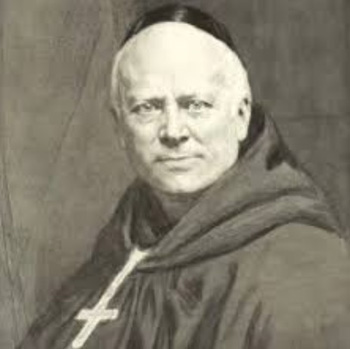 This claim's purpose was evidently to lend an aura of respectability to the Liturgical Movement by linking it to the reputation of Dom Guéranger, who was noted for the remarkable success of his liturgical renewal in France in the aftermath of the French Revolution, which had reduced monasticism to ruins.
This claim's purpose was evidently to lend an aura of respectability to the Liturgical Movement by linking it to the reputation of Dom Guéranger, who was noted for the remarkable success of his liturgical renewal in France in the aftermath of the French Revolution, which had reduced monasticism to ruins.
A pertinent question to consider is what reliability one can place on an assessment of Guéranger’s achievements made by members of the post-Vatican II Liturgical Establishment in an era that has been described as the French Revolution in the Catholic Church and has witnessed a widespread abandoning of monastic life.
After all, they were imbued with the principles of 1789 – Liberty, Equality and Fraternity – that Guéranger opposed. He was an Ultramontane, i.e., a strong advocate of papal supremacy and Roman centralized control of the Church, whereas they embraced Collegiality. With such diametrically opposed views, it is unlikely that there would be a concordance of sentiments between the two different worlds of pre- and post-Vatican II positions on monasticism, the liturgy or indeed any other aspect of ecclesiastical life.
The first requirement in assessing Guéranger’s work as a Benedictine monk is to place his contribution to the good of the Church in its historical context.
Contrast between Dom Guéranger & later reformers
If we take the main principles on which Dom Guéranger’ s liturgical reform was based, several points of divergence will emerge that throw into stark relief the fundamental incompatibility of the spirit of renewal that animated Guéranger and the spirit of reform that drove the agenda of the pre-Vatican II liturgists. For convenience, the principles to which Guéranger adhered can be grouped under four headings:
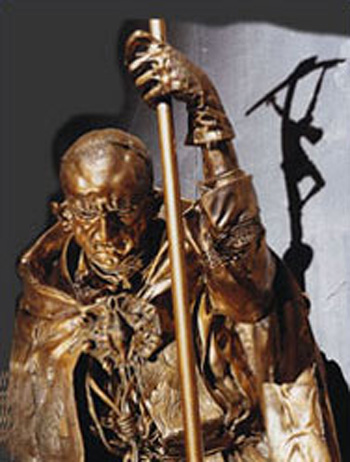
The history of today's Liturgical Movement is peppered with experiments by reformers who introduced novelties of their own devising into the liturgy. The early years of the century saw the creeping practice of “active participation,” “Dialogue Mass” and Mass facing the people. There was even some ecumenical experimentation, e.g., Dom Beauduin’s initiatives in inter-confessional sharing at the monastery of Amay, which he founded in 1925.
From mid-century up to Vatican II the liturgical reformers were allowed, with papal support, to cut out significant elements of the Roman Missal, particularly in the Holy Week services, which they judged unsuitable to modern tastes. Pope John XXIII, continuing the policy of his predecessor, excised many Feasts from the General Calendar, which also affected the Breviary.
He removed the Confiteor before Communion in the Ordinary of the Mass, and altered the unchangeable Canon with the addition of the name of St. Joseph. Thus, by the time of the Constitution on the Liturgy in 1963, if the link with Tradition was not entirely broken, it was at least dangerously frayed.
As for the question of liturgical scholarship, Guéranger himself was an exemplary practitioner in this domain. He had all the essential qualities for the task – piety, erudition, zeal for the truth and a sincere desire to serve the Church by preserving her traditions. Far different was the situation with the pre-Vatican II liturgical reformers.
 A thorough investigation into their research methods will show that their objective was not to furnish truth and expand knowledge, but was aimed instead at publicizing only those findings that supported their pre-conceived notions of liturgical reform while ignoring conflicting evidence.
A thorough investigation into their research methods will show that their objective was not to furnish truth and expand knowledge, but was aimed instead at publicizing only those findings that supported their pre-conceived notions of liturgical reform while ignoring conflicting evidence.
A comparison with the work of Guéranger (who achieved unity within the Roman rite in strict fidelity to the Council of Trent) will reveal that the 20th-century progressivists had a totally different conception of liturgical renewal. For them, research-based study was simply a strategy to drive policy change at the highest level of the Church Hierarchy. In this they were eminently successful, as the history of Novus Ordo liturgy attests.
In 1924, Pope Pius XI had criticized the “proud and conceited spirit” of certain scholarly reformers who lacked the right dispositions for academic research in liturgical matters:
“However, these studies of ancient Rites must be preceded by the necessary groundwork for knowledge, and should be accompanied by piety and docile and humble obedience. And if these be lacking, any investigation whatever into ancient liturgies of Mass will turn out to be impious and fruitless: for when the supreme authority of the Apostolic See in liturgical matters, which deservedly rejects puffed-up learning, and, with the Apostle, ‘speaks wisdom among the perfect’ (1 Cor. 8: 1,2: 6), has been spurned, whether through ignorance or a proud and conceited spirit, the danger immediately threatens that the error known as Modernism will be introduced also into liturgical matters." 2
The Liturgical Movement imbued with Modernism
Ironically, a resurgent Modernism was already making steady progress in Pius XI’s reign, and had gained such a foothold in Pius XII’s time that even a Protestant theologian, cheering on the progress of the Liturgical Movement from the sidelines, noted in 1954:
“It is especially in its theological method that the Liturgical Movement evidences a relationship with the errors of Modernism as condemned by Pius X in Pascendi… certain of the most fruitful trends condemned by Pius X in his blanket condemnation have served to make the Liturgical Movement the great power it is today.” 3
Continued

It will be shown, however, that it rests on no verifiable data, and that it can be dismissed as part of the universe of “fake news” inhabited by today’s Catholics who are attached to the Conciliar reforms.

Dom Guéranger, an ultramontane faithful
to the Church’s Tradition
A pertinent question to consider is what reliability one can place on an assessment of Guéranger’s achievements made by members of the post-Vatican II Liturgical Establishment in an era that has been described as the French Revolution in the Catholic Church and has witnessed a widespread abandoning of monastic life.
After all, they were imbued with the principles of 1789 – Liberty, Equality and Fraternity – that Guéranger opposed. He was an Ultramontane, i.e., a strong advocate of papal supremacy and Roman centralized control of the Church, whereas they embraced Collegiality. With such diametrically opposed views, it is unlikely that there would be a concordance of sentiments between the two different worlds of pre- and post-Vatican II positions on monasticism, the liturgy or indeed any other aspect of ecclesiastical life.
The first requirement in assessing Guéranger’s work as a Benedictine monk is to place his contribution to the good of the Church in its historical context.
Contrast between Dom Guéranger & later reformers
If we take the main principles on which Dom Guéranger’ s liturgical reform was based, several points of divergence will emerge that throw into stark relief the fundamental incompatibility of the spirit of renewal that animated Guéranger and the spirit of reform that drove the agenda of the pre-Vatican II liturgists. For convenience, the principles to which Guéranger adhered can be grouped under four headings:

Paul VI dishonestly claimed Dom Guéranger was the founder of the progressivist liturgical reforms
- Liturgical reform must maintain an unbroken link with Tradition;
- It must not introduce novelties or adaptations to local customs;
- It must not allow any part of the liturgy to be cut out;
- It must be undertaken by persons noted for their piety rather than simply for their scholarship.
The history of today's Liturgical Movement is peppered with experiments by reformers who introduced novelties of their own devising into the liturgy. The early years of the century saw the creeping practice of “active participation,” “Dialogue Mass” and Mass facing the people. There was even some ecumenical experimentation, e.g., Dom Beauduin’s initiatives in inter-confessional sharing at the monastery of Amay, which he founded in 1925.
From mid-century up to Vatican II the liturgical reformers were allowed, with papal support, to cut out significant elements of the Roman Missal, particularly in the Holy Week services, which they judged unsuitable to modern tastes. Pope John XXIII, continuing the policy of his predecessor, excised many Feasts from the General Calendar, which also affected the Breviary.
He removed the Confiteor before Communion in the Ordinary of the Mass, and altered the unchangeable Canon with the addition of the name of St. Joseph. Thus, by the time of the Constitution on the Liturgy in 1963, if the link with Tradition was not entirely broken, it was at least dangerously frayed.
As for the question of liturgical scholarship, Guéranger himself was an exemplary practitioner in this domain. He had all the essential qualities for the task – piety, erudition, zeal for the truth and a sincere desire to serve the Church by preserving her traditions. Far different was the situation with the pre-Vatican II liturgical reformers.

Pius XI accused modernists of lacking piety & scholarship
A comparison with the work of Guéranger (who achieved unity within the Roman rite in strict fidelity to the Council of Trent) will reveal that the 20th-century progressivists had a totally different conception of liturgical renewal. For them, research-based study was simply a strategy to drive policy change at the highest level of the Church Hierarchy. In this they were eminently successful, as the history of Novus Ordo liturgy attests.
In 1924, Pope Pius XI had criticized the “proud and conceited spirit” of certain scholarly reformers who lacked the right dispositions for academic research in liturgical matters:
“However, these studies of ancient Rites must be preceded by the necessary groundwork for knowledge, and should be accompanied by piety and docile and humble obedience. And if these be lacking, any investigation whatever into ancient liturgies of Mass will turn out to be impious and fruitless: for when the supreme authority of the Apostolic See in liturgical matters, which deservedly rejects puffed-up learning, and, with the Apostle, ‘speaks wisdom among the perfect’ (1 Cor. 8: 1,2: 6), has been spurned, whether through ignorance or a proud and conceited spirit, the danger immediately threatens that the error known as Modernism will be introduced also into liturgical matters." 2
The Liturgical Movement imbued with Modernism
Ironically, a resurgent Modernism was already making steady progress in Pius XI’s reign, and had gained such a foothold in Pius XII’s time that even a Protestant theologian, cheering on the progress of the Liturgical Movement from the sidelines, noted in 1954:
“It is especially in its theological method that the Liturgical Movement evidences a relationship with the errors of Modernism as condemned by Pius X in Pascendi… certain of the most fruitful trends condemned by Pius X in his blanket condemnation have served to make the Liturgical Movement the great power it is today.” 3
Continued
- “Auctor illius spiritalis motus.”apud Cuthbert Johnson OSB, Prosper Guéranger (1805-1875), A Liturgical Theologian: an Introduction to his Liturgical Writings and Work, Pontificio Ateneo Sant’Anselmo, 1984, p. 14.
- Pius XI, Missale Bracarense, Typis Polyglottis Vaticanis, 1924, p. viii. The Rite of Braga took shape within the Archdiocese of Braga between the 11th and 13th centuries. Being more than 200 years old at the time of Pope Pius V's Quo Primum of July 14, 1570, the Rite of Braga was allowed to continue in use.
- Ernest Koenker, The Liturgical Renaissance in the Roman Catholic Church, University of Chicago Press, 1954, pp. 29, 30-31.
Posted August 8, 2025

______________________
______________________
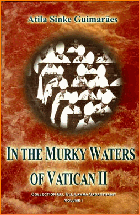 Volume I |
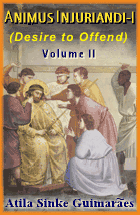 Volume II |
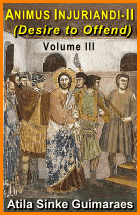 Volume III |
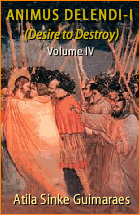 Volume IV |
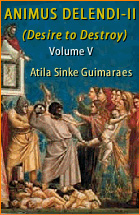 Volume V |
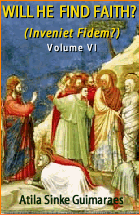 Volume VI |
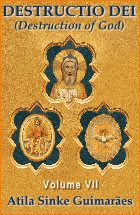 Volume VII |
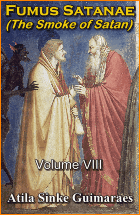 Volume VIII |
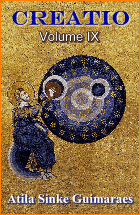 Volume IX |
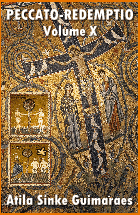 Volume X |
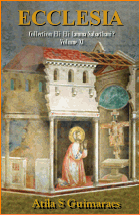 Volume XI |
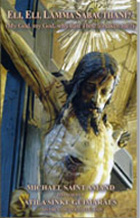 Special Edition |


